#Grand Duchess Alexandra of Mecklenburg Schwerin
Explore tagged Tumblr posts
Text
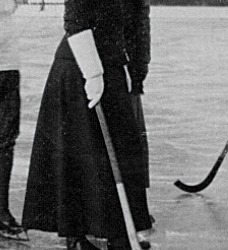


Frederick Francis and Alexandra, Grand Duke and Grand Duchess of Mecklenburg-Schwerin playing ice hockey with friends at Schlossgarten, 1904.
(❄️)
#it’s snowing today:)#grand duke frederick francis iv of mecklenburg schwerin#grand duchess alexandra of mecklenburg schwerin
24 notes
·
View notes
Text
𝙲𝚑𝚘𝚌𝚘𝚕𝚊𝚝𝚎 𝚌𝚊𝚛𝚍𝚜 𝚘𝚏 𝚁𝚘𝚢𝚊𝚕 𝚠𝚘𝚖𝚎𝚗 👑✨🍫
(𝙿𝚊𝚛𝚝 𝟹 𝚘𝚞𝚝 𝚘𝚏 𝟺)
~~~~~~~~~~~~~~~~~~~~~~~~~~~~~~~~~~~~~~~~~~~~~~~
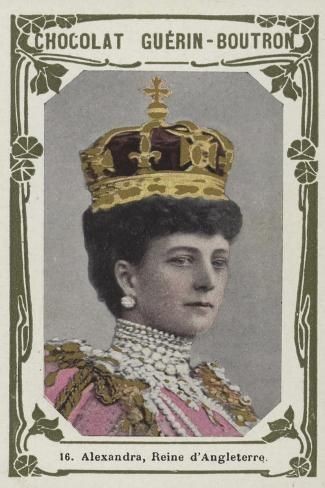
Queen Alexandra 𝚘𝚏 𝚝𝚑𝚎 𝚄𝚗𝚒𝚝𝚎𝚍 𝙺𝚒𝚗𝚐𝚍𝚘𝚖, née Princess Alexandra of Denmark.
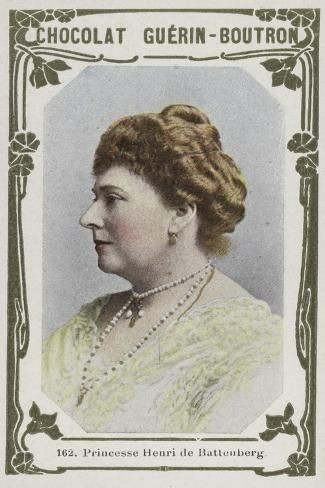
Princess Beatrice of Battenberg, née Princess Beatrice of the United Kingdom.
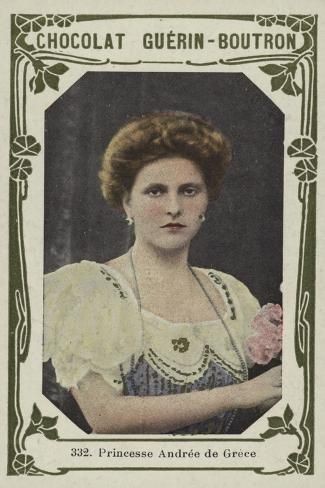
Princess Andrew of Greece and Denmark, née Princess Alice of Battenberg.
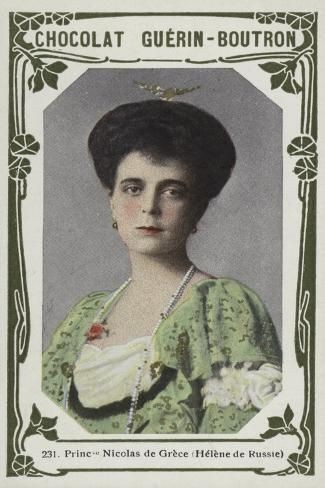
Princess Nicholas of Greece and Denmark, née Grand Duchess Elena Vladimirovna.
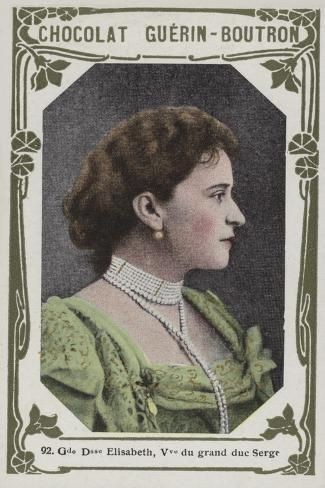
Grand Duchess Elisabeth Feodorovna, née Princess Elisabeth of Hesse.
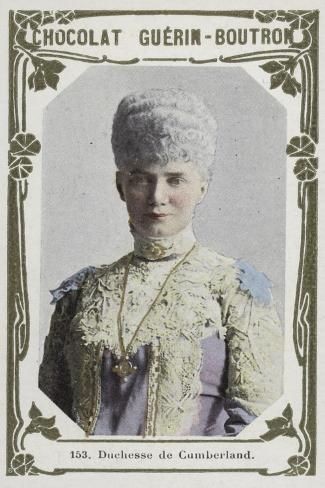
Crown Princess Thyra of Hanover, née Princess Thyra of Denmark.

Princess Olga of Hanover
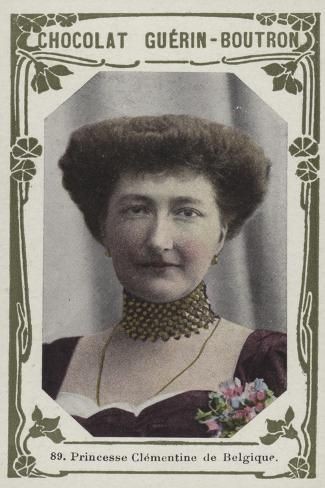
Princess Clementine of Belgium

Queen Alexandrine of Denmark, née Duchess Alexandrine of Mecklenburg-Schwerin.
#queen alexandra#alexandra of denmark#princess beatrice of battenberg#princess alice of battenberg#princess alice of greece and denmark#grand duchess elena vladimirovna#grand duchess elisabeth feodorovna#elisabeth of hesse#princess thyra of denmark#crown princess thyra of hanover#princess olga of hanover#princess clementine of belgium#queen alexandrine of denmark#alexandrine of mecklenburg-schwerin#chocolate cards
17 notes
·
View notes
Text
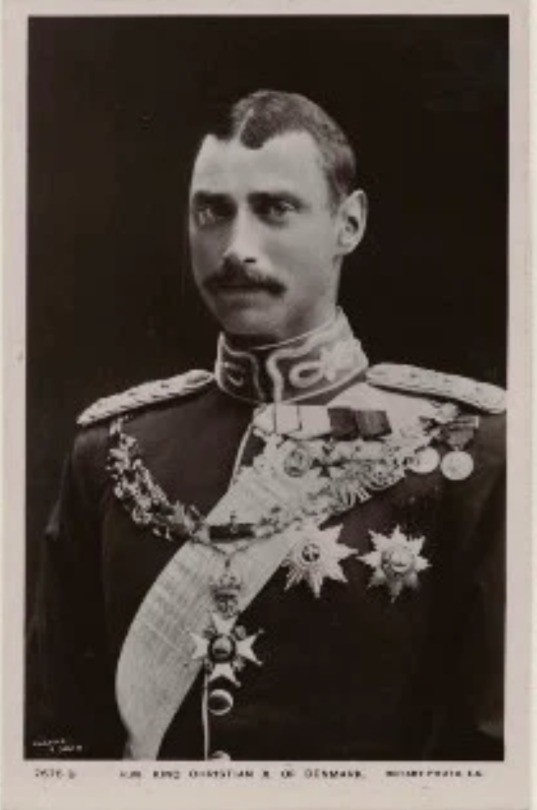
King Christian X (Christian Carl Frederik Albert Alexander Vilhelm; 1870 – 1947); King of Denmark from 1912 to his death in 1947
I want to place this remarkable individual within the context of the many royal families we discuss in this blog. He had quite an eventful and successful reign, including transitioning his country into a constitutional monarchy, but this post is just about (some) of his relatives.
He was a grandson of Christian IX and the son of the future Frederick VIII. His brother was the future Hakoon VII of Norway. His paternal aunts were Dagmar (Empress Maria Feodorovna) and Queen Alexandra of the United Kingdom. King George V, Queen Maud, and Tsar Nicholas II were his first cousins. Christian X's mother was Lovisa of Sweden.
He was raised strictly in a palace part of the Amelienborg Palace complex. He received a military education and studied at the Officers Academy.
Christian initially loved Princess Marguerite of Orleans, but his feelings were not returned, so he married Princess Alexandrine of Mecklenburg Schwerin. Alexandrine's maternal line was Romanov...her mother, Anastasia, was the daughter of Nicholas I's younger son, Grand Duke Mikhail Nikolaievich. They had two sons: Prince Frederick (1899–1972), later King Frederick IX of Denmark and Prince Knud (1900–1976)
In case you are wondering, he was 6 feet 7 inches tall.
What a dynasty Christian IX and Queen Louise gave to the world!
#European history#Christian IX#Christian X#Louise of Hesse-Kessel#Grand Duchess Anastasia Mikhailovna#Frederick VIII#Empress Maria Feodorovna#Queen Alexandra of the United Kingdom#George V#Nicholas II#King Hakoon VII#Queen Maud#Lovisa of Sweeden#Alexandrine of Mecklenburg Schwerin
14 notes
·
View notes
Text


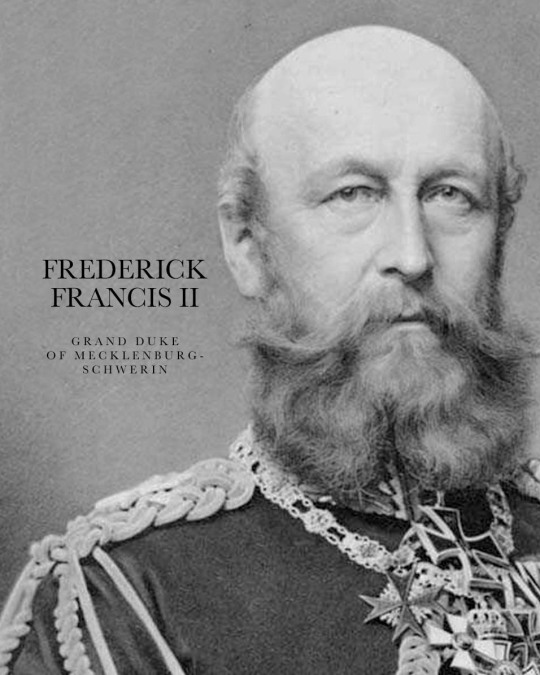
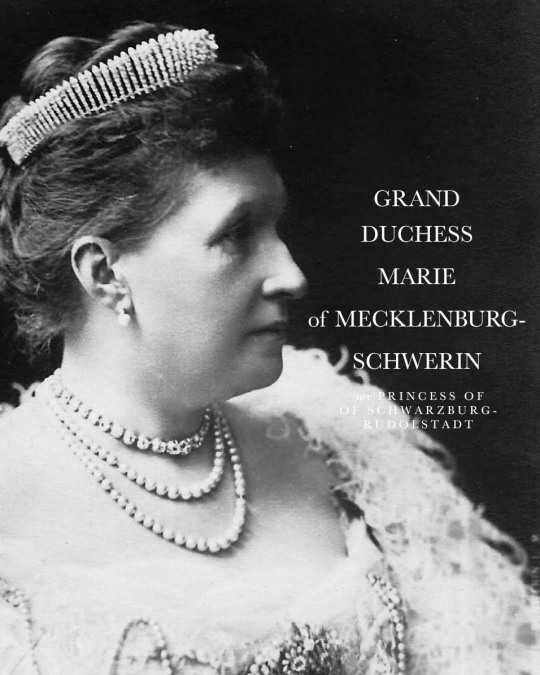
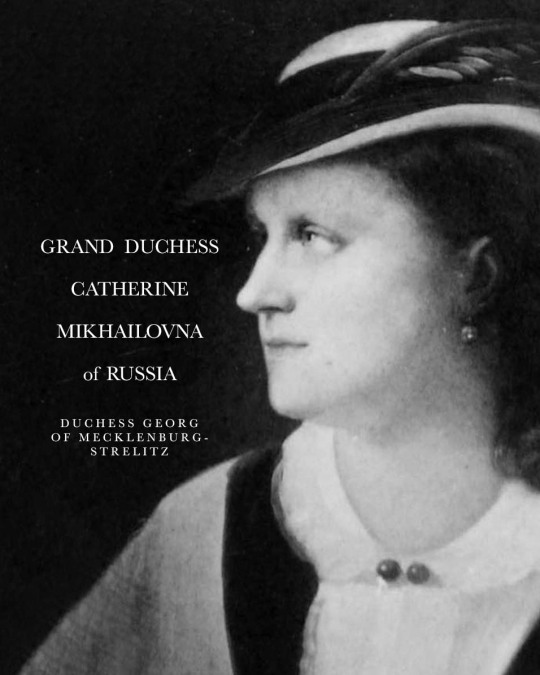

GODPARENTS OF GRAND DUCHESS ELENA VLADIMIROVNA
Grand Duchess Elena Vladimirovna, the youngest child and only daughter of Grand Duke Vladimir Alexandrovich of Russia and his German-born wife Grand Duchess Maria Pavlova (née Duchess of Mecklenburg-Schwerin), was born on 29 January (O.S. 17) 1882 in Saint Petersburg. She was christened on 12 March in the Grand Palace Church of Catherine Palace, Tsarskoe Selo. Her godparents were:
ALEXANDER III, EMPEROR OF RUSSIA - her paternal uncle, who had succeeded the Russian throne just a year prior, was named as one of her godparents. He was highly reactionary in domestic affairs and reversed some of the liberal reforms of his father, Alexander II. He was present at his niece's christening.
FREDERICK FRANCIS II, GRAND DUKE OF MECKLENBURG-SCHWERIN - her maternal grandfather was another of her godparents. A Romanov by descent (being a great-grandson of Tsar Paul), he held the rank of Prussian general and was also a Russian General Field Marshal.
MARIE, GRAND DUCHESS CONSORT OF MECKLENBURG-SCHWERIN - her step-grandmother was also named as her godparent. The third wife of Frederick Francis II, whose marriage produced four children, including Prince Hendrik, consort of Queen Wilhelmina of the Netherlands and father of Queen Juliana.
GRAND DUCHESS CATHERINE MIKHAILOVNA OF RUSSIA - A first cousin of her grandfather, Catherine was one of the two godparents present at her christening. She was the wife of Duke Georg August of Mecklenburg-Strelitz, and a great philanthropist and many of the organisations she supported and helped to create still operate today.
ALEXANDRINE, GRAND DUCHESS OF MECKLENBURG-SCHWERIN - her maternal great-grandmother, a Prussian-born princess was also her godparent. She was a sister of Empress Alexandra Feodorovna-consort of Nicholas I-who was Elena's great-grandmother on her father’s side. In 1822, she married Paul Frederick, Hereditary Grand Duke of Mecklenburg-Schwerin (himself, a grandson of Russian Tsar Paul). Their marriage was generally considered unhappy, he was a military man who had little time for or interest in his wife and family. Alexandrine, by contrast, was a devoted mother who tenderly raised her children and actively cultivated their cultural pursuits.
Source
23 notes
·
View notes
Text
More from 1911 -
1911 Euphimia Nosova by Konstantin Somov (State Tretyakov Gallery - Moskva, Russia). From Wikimedia 2075X3293. This is the epitome of Edwardian dress.

Queen Alexandra's daughters
Left 1911 Duchess of Fife, Princesses Alexandra and Maude. From the lost gallery's photostream on flickr 5384X3684 @800 4.1Mj.
Right 1911 HH Princess Maud and HRH Princess Royal Louise. From eBay reduced contrast and removed mono-color tint 957X1522.
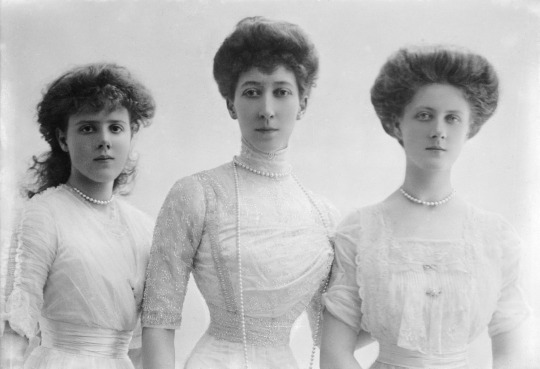

1911 Evening dress of Queen Alexandra (Fashion Museum - Bath, Somerset, UK). From tumblr.com/fashionsfromthepast 1280X1812.
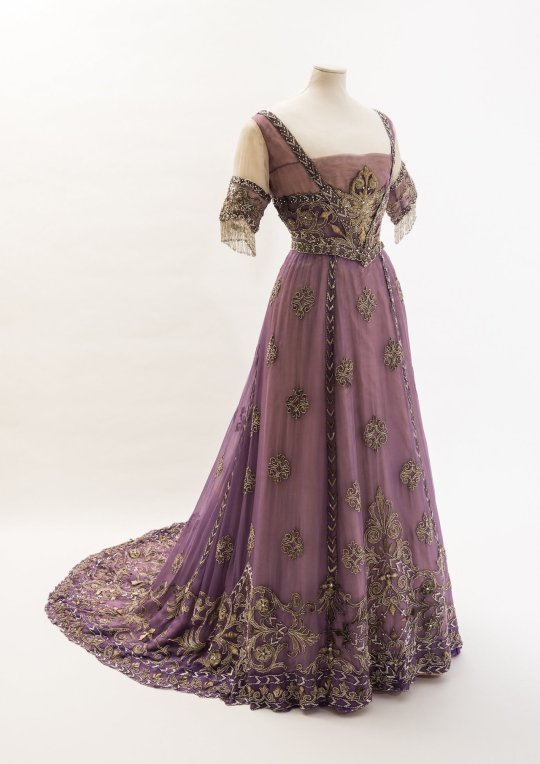
1911 Geneviève Vix, a singer by Jean Coraboeuf (Musée des Beaux-Arts de Nantes - Nantes, Loire-Atlantique, Pays de la Loire, France). From history-of-fashion.tumblr.com/image/177126241755 643X975.

1911 Hélène d'Orléans, duchesse d'Aosta by ?. From tumblr.com/blog/view/jeannepompadour/683841884513288192; fixed a few spots w Pshop 1450X2000.
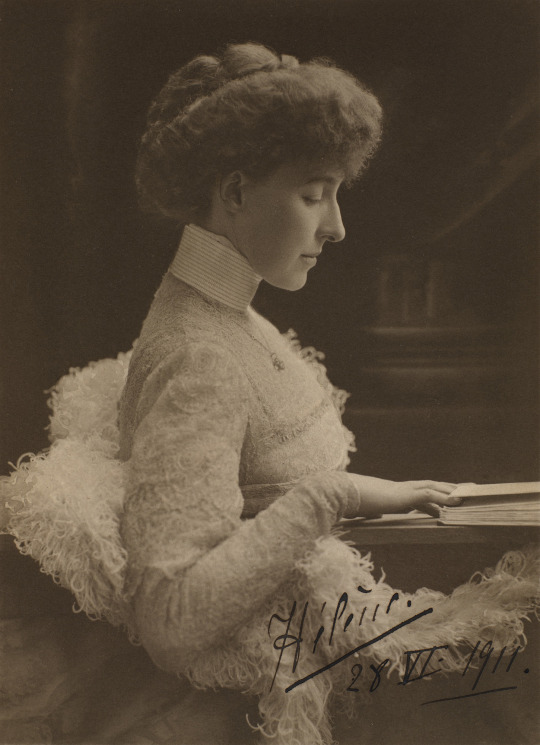
1911 Frau Luther by Lovis Corinth (Landesmuseum Hannover - Hanover, Niedersachsen, Germany). From cutlermiles.com/portrait-of-frau-luther-lovis-corinth/ 966X1280.
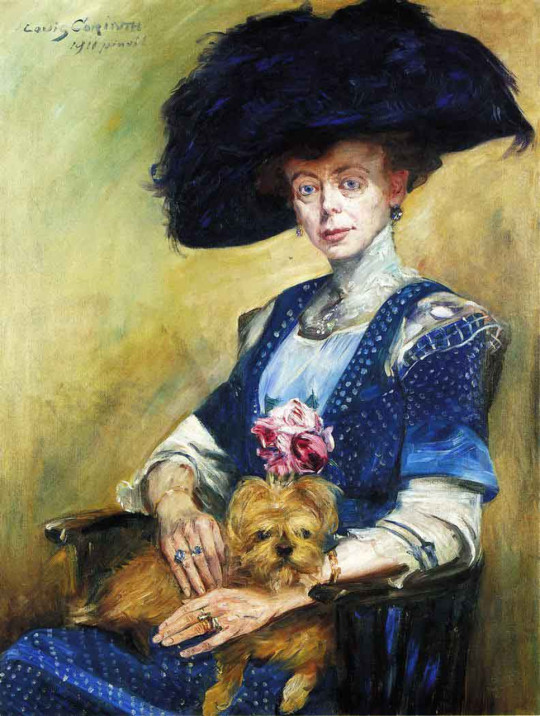
1911 Lady in Lavender by Lawton S. Parker (private collection). From the discontinued Athenaeum Web site 716X955.

Left Maria Josefa of Austria with Karl. Posted to Foro Dinastias by Katyusha on 25 May 2010 614X800
Right ca. 1911 (based on age of child) Grand Duchess-Mother Anastasia Mikhailovna of Mecklenburg-Schwerin with her grandson Friedrich. From eBay; removed mono-color tint 891X1433.

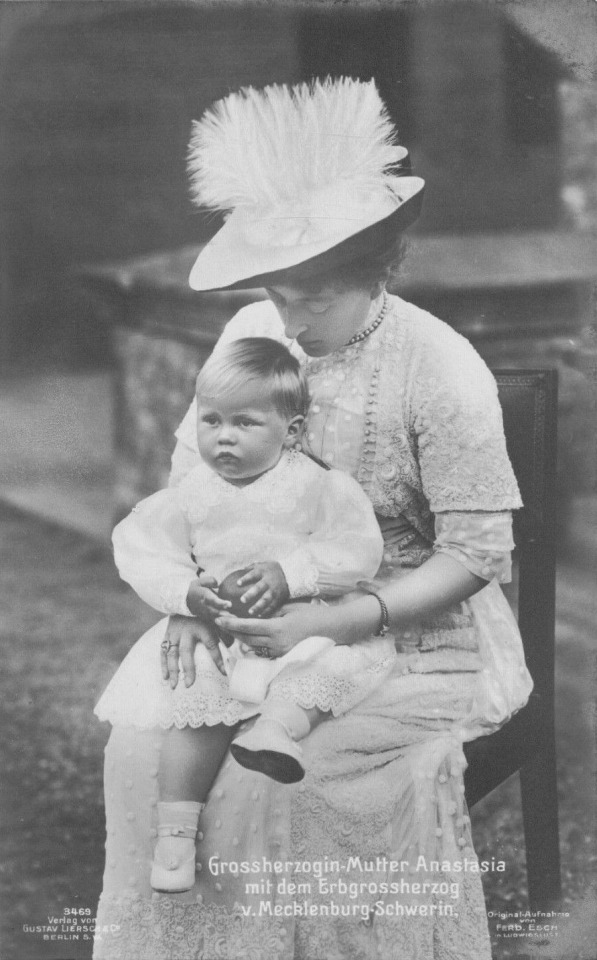
1911 Dolors Vidal by Ramon Casas (Museu Nacional d'Art de Catalunya - Barcelona, Catalunya, Spain). From artsandculture.google.com; fixed obvious flaws w Pashop 1332X2652 @144 4.9Mp.

1911 (1 August issue) Le Theatre Mlle Lantelme. From verbinina.wordpress.com/2012/12/05/le-theatre-303/le-theatre-303-1-aout-1911-vkl/; fixed spots w Pshop 1182X1616

#1910s fashion#1911 fashion#Bellle Époque fashion#Edwardian fashion#Euphimia Nosova#Konstantin Somov#Princess Royal Louise#Princess Alexandra - 2nd Duchess of Fife#Maud Carnegie - Countess of Southesk#Queen Alexandra#Geneviève Vix#Jean Coraboeuf#Hélène d'Orléans#Frau Luther#Lovis Corinth#Lawton S. Parker#Maria Josefa of Austria#Anastasia Mikhailovna of Mecklenburg-Schwerin#Dolors Vidal#Ramon Casas#Genviève Lantelme
6 notes
·
View notes
Photo
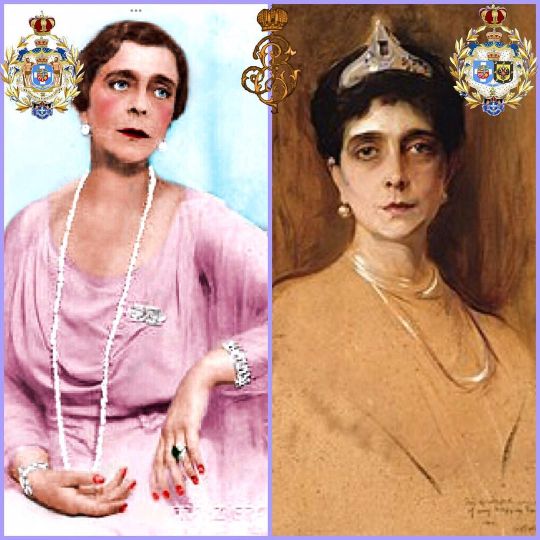
66 years since the death of HI&RH Princess Helena of Greece and Denmark Grand Duchess Elena Vladimirovna of Russia (29 January 1882 – 13 March 1957). Princess Helena was the only daughter and youngest child of Grand Duke Vladimir Alexandrovich of Russia and Duchess Marie of Mecklenburg-Schwerin. Her husband was Prince Nicholas of Greece and Denmark and they were both first cousins of Emperor Nicholas II of Russia. They had 3 children : 1)Princess Olga of Greece married Prince Paul of Yugoslavia; 2)Princess Elizabeth of Greece married Count Karl Theodor zu Toerring-Jettenbach, son of Duchess Sophie in Bavaria and scion of an old and rich Bavarian mediatized family; and 3)Princess Marina of Greece married the Prince George, Duke of Kent in November 1934.She was also first cousin of Queen Juliana of the Netherlands and Alexandrine of Mecklenburg-Schwerin, Queen consort of Denmark and the grandmother of Prince Edward, Duke of Kent, Princess Alexandra, the Honourable Lady Ogilvy, and Prince Michael of Kent. Princess Elena became a widow early in 1938, as Prince Nicholas suffered a heart attack and died suddenly. She remained in Greece throughout the Second World War, dying there in 1957 and she is buried in the Royal Cemetery in Tatoi Royal Estate close Athens. #royal #royalty #royals#greekroyals#greekroyalfamily#danishroyals#danishroyalfamily#queenannemarie#crownprincessmariechantal#princessmariechantal#crownprincepavlos#princepavlos#kingconstantine#princessmarieolympia#princessolympia#princeconstantinealexios#princenikolaos#princesstatiana#princeachileasandreas#princeodysseaskimon#princearistidesstavros #princephilipos #princessnina #princesstheodora#queenofgreece #princessofgreece#princeofgreece #dukeofsparta#kingofgreece https://www.instagram.com/p/CpuKKvLoaa9/?igshid=NGJjMDIxMWI=
#royal#royalty#royals#greekroyals#greekroyalfamily#danishroyals#danishroyalfamily#queenannemarie#crownprincessmariechantal#princessmariechantal#crownprincepavlos#princepavlos#kingconstantine#princessmarieolympia#princessolympia#princeconstantinealexios#princenikolaos#princesstatiana#princeachileasandreas#princeodysseaskimon#princearistidesstavros#princephilipos#princessnina#princesstheodora#queenofgreece#princessofgreece#princeofgreece#dukeofsparta#kingofgreece
5 notes
·
View notes
Photo

Necklace of Grand Duchess Alexandra of Mecklenburg-Schwerin
c.1905
Christie’s
#necklace#fashion history#historical fashion#1900s#grand duchess alexandra#Mecklenburg Schwerin#princess alexandra of hanover and cumberland#1905#20th century#aquamarine#ruby#diamond#pearl#jewelry#christies#Grand Duchess Alexandra of Mecklenburg Schwerin
428 notes
·
View notes
Photo


Bridesmaids of Duchess Alexandrine of Mecklenburg in the day of her wedding with Prince Christian of Denmark, later King Christian X. Cannes, 1898
Photo 1, from L to R
Princess Olga of Hannover, Grand Duchess Helena Vladimirovna of Russia, Duchess Cecilie of Mecklenburg Schwerin , ?
Photo 2, from L to R
Princess Thyra of Denmark, Princess Alexandra of Hannover, Princess Marie of Hannover , ?
#Antique#vintage#Victorian#1890s#Victorian fashion#19th century#bridesmaid#Wedding#Royalty#Grand Duchess Alexandra of Mecklenburg Schwerin#Duchess Marie of Baden#Princess Olga of Hannover#Grand Duchess Helena Vladimirovna of Russia#Crown Princess Cecilie of Prussia
347 notes
·
View notes
Text
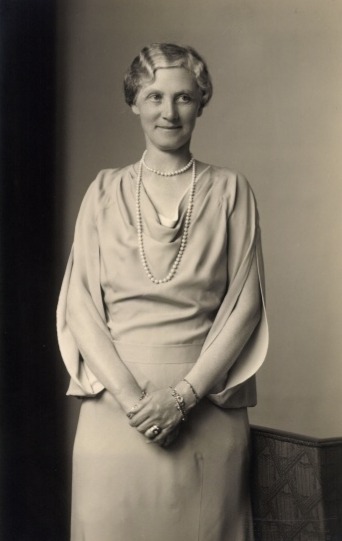
Grand Duchess Alexandra of Mecklenburg-Schwerin, mids 1930s.
She was named after her maternal aunt Queen Alexandra of the United Kingdom.
#grand duchess alexandra of mecklenburg-schwerin#mecklenburg-schwerin#german royalty#german royal#mids 1930s#1930s
23 notes
·
View notes
Text
Tiaras at the Houston Museum of Natural Sciences
The Houston Museum of Natural Sciences in Texas is home to the McFerrin Fabergé Collection, one of the largest private collections of Fabergé in the world. The collection includes three tiaras and it was recently announced that they are the ones that bought Grand Duchess Alexandra of Mecklenburg-Schwerin’s Aquamarine Tiara at auction last year.
Grand Duchess Alexandra of Mecklenburg-Schwerin’s Aquamarine Tiara - It was made for Grand Duchess Alexandra circa 1904 as a wedding gift from her husband.

Leuchtenburg Diamond Tiara - It was made by August Holmström circa 1890 for the Dukes of Leuchtenberg before passing through the Belgian and Italian royal families. The briolette diamonds belonged to Empress Josephine.
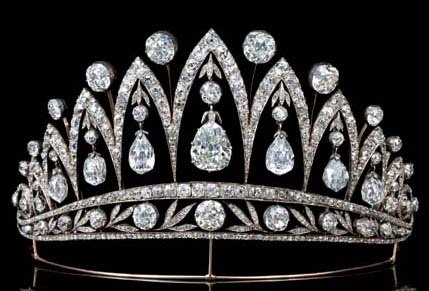
Westminster Blue Enamel Kokoshnik - This tiara was made circa 1910 for Constance Cornwallis-West, first wife of the 2nd Duke of Westminster. It was long thought to be by Fabergé but was more recently proven to have been made by Chaumet. The McFerrin collection includes some Fauxbergé or pieces in the style of Fabergé. Thanks to @royalrumormonger for letting me know that this tiara was on display.

Other than the McFerrin Collection, the museum is home to the Cullen Hall of Gems and Minerals and the Lester & Sue Smith Gem Vault. The latter is home to another tiara.
Emerald Tiara - It was made by Ernesto Moreira specifically to be displayed in the museum using gemstones already a part of the Smith Gem Vault including a 42.4 carat emerald set in platinum.
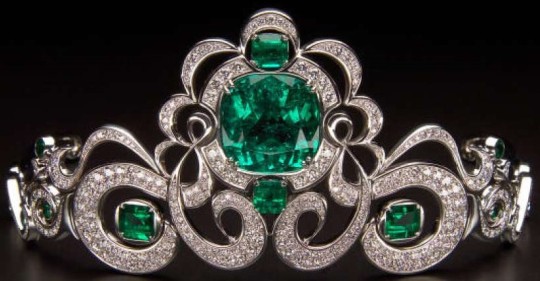
You can buy tickets here and as always let me know if you visit the exhibition.
#tiara exhibition#Faberge#Chaumet#Ernesto Moreira#tiara#United States#United Kingdom#Germany#Belgium#Italy#France#emerald#aquamarine#enamel#Duchess of Westminster#grand duchess alexandra#Duchess of Leuchtenberg#mecklenburg-schwerin#tiaras#diadem#diadems#royal tiaras#jewels#royal jewels#royal#royaltyedit#royals#royalty#jewellery#jewelry
176 notes
·
View notes
Note
Please share more of your postcard collection with us? :)
Gladly!! 🫶🏻
These four were the first ones I bought.
1. Alexandra, Grand Duchess of Mecklenburg-Schwerin with her firstborn, Frederick Franz.
2. Alexandra and Frederick Franz with their little son.
3. Then Crown Princess Sophia of the Hellenes with her children.
4. Not sure if they were already King and Queen when this photo was taken but Constantine and Sophia with their children.


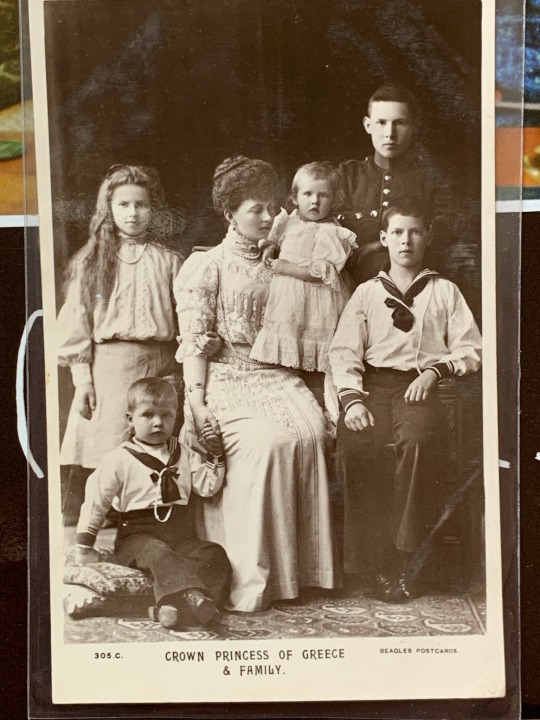
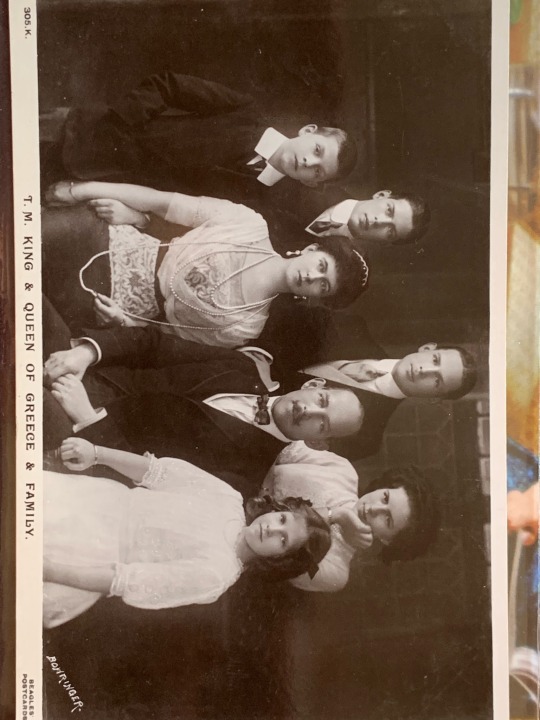
Frankly, I have no idea how I ended up with so many Astrid postcards. 🤭

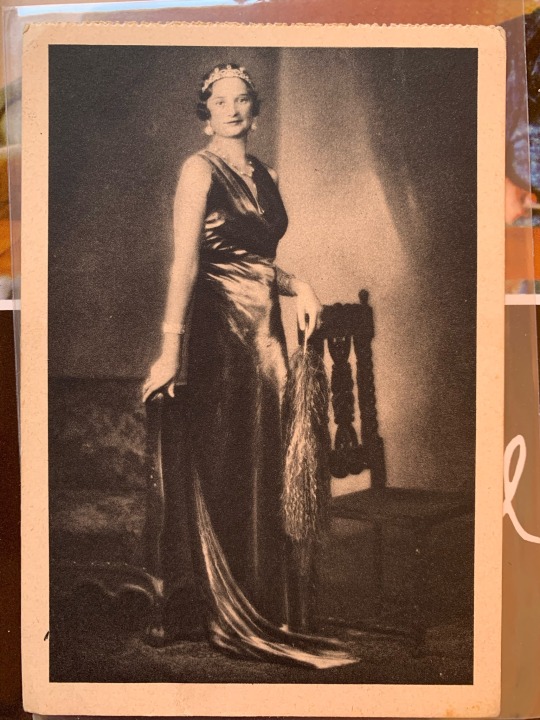
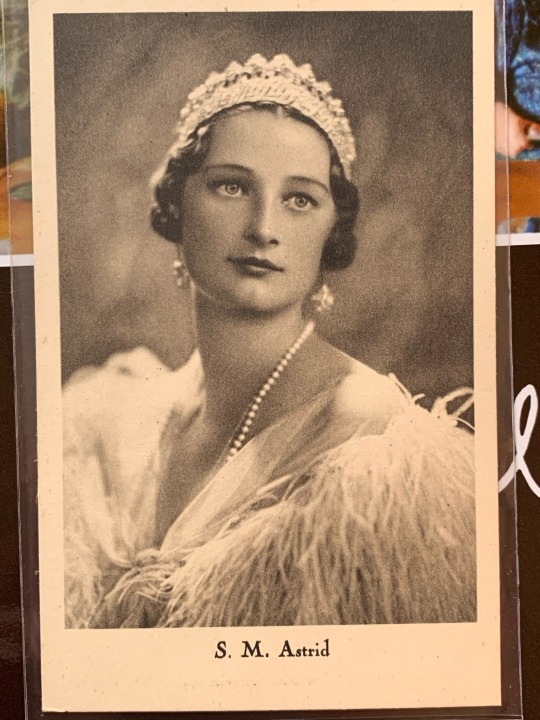
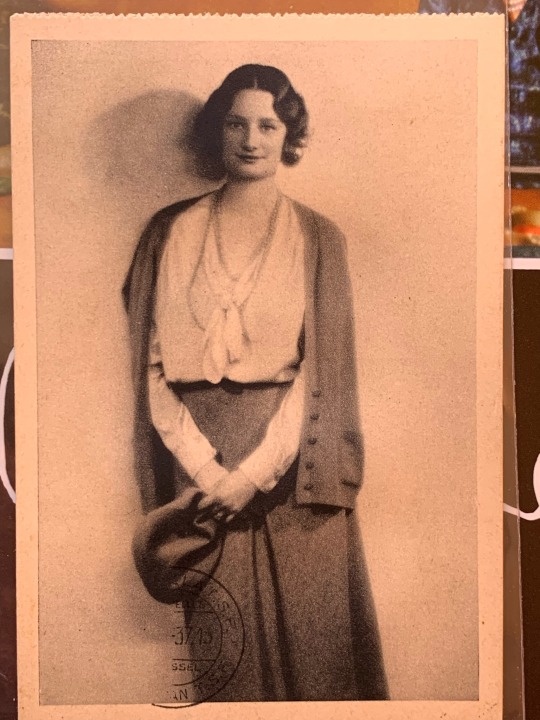
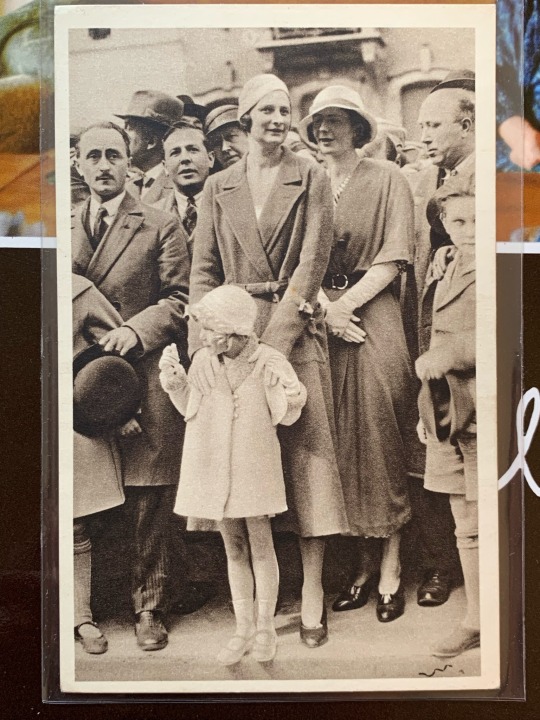
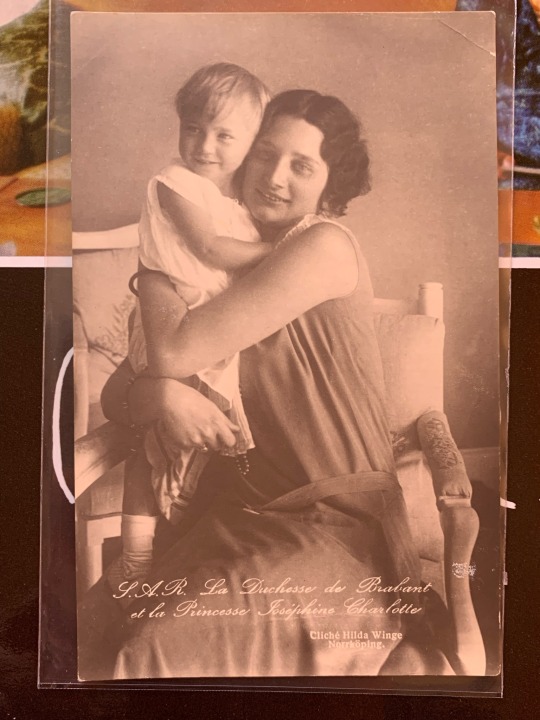
To be continued.
29 notes
·
View notes
Photo
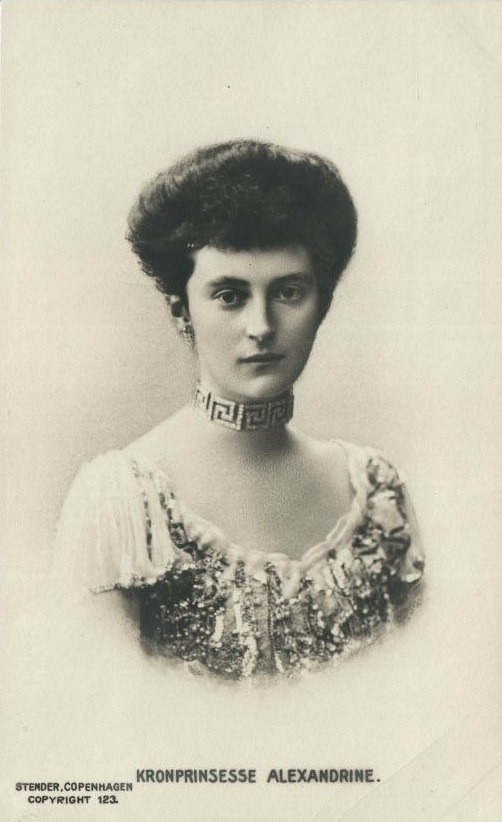
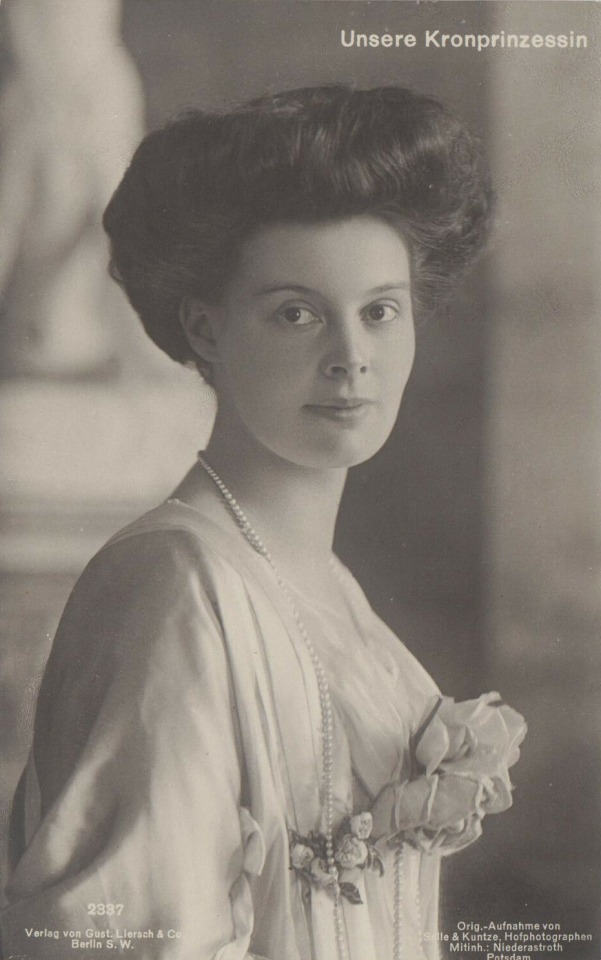
The Crown Princess of Denmark, who, it is feared, is developing all the symptoms of rapid consumption, is the elder of the two daughters of the late Grand Duke of Mecklenburg-Schwerin, her only sister being the German Crown Princess. Despite the fact that the late Grand Duke, their father, died by his own hand, and that their mother, the Grand Duchess Anastasia (born a Russian Grand Duchess), is one of the most lively and unconventional of European Royalties, these two daughters have made the most brilliant marriages of their day. Both are the mothers of prospective Sovereigns, the Crown Princess of Denmark having two little sons. Their only brother is married to Princess Alexandra of Cumberland. The German Crown Princess, before he marriage, never dared to spend a winter in the North. The Kaiser, it is well known, viewed with mixed feelings his son's alliance with so delicate a girl, the daughter of a fashionable and anything but domesticated mother and an ailing father. However the Princess has gone through the first year or so of married life without being ordered South, and both she and the Crown Princess of Denmark have managed to win the love and approval of their respective husbands' people.
#Queen Alexandrine of Denmark#danish royal family#magazine article#Crown Princess Cecilie#prussian royal family#mecklenburg-schwerin#1900s
33 notes
·
View notes
Text







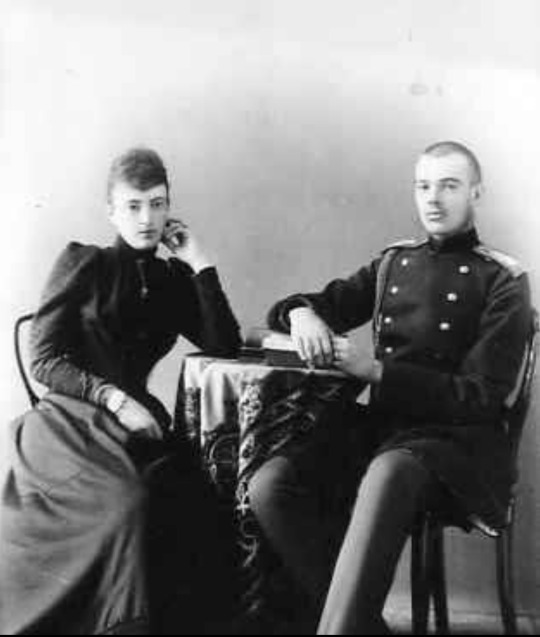
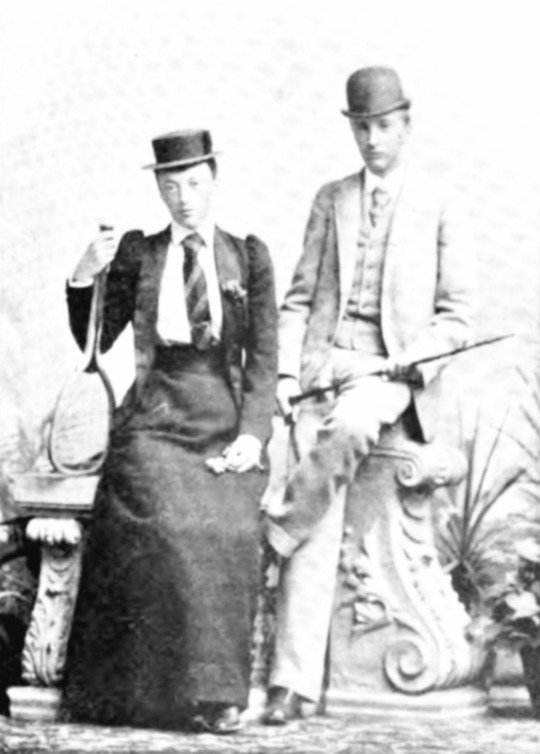


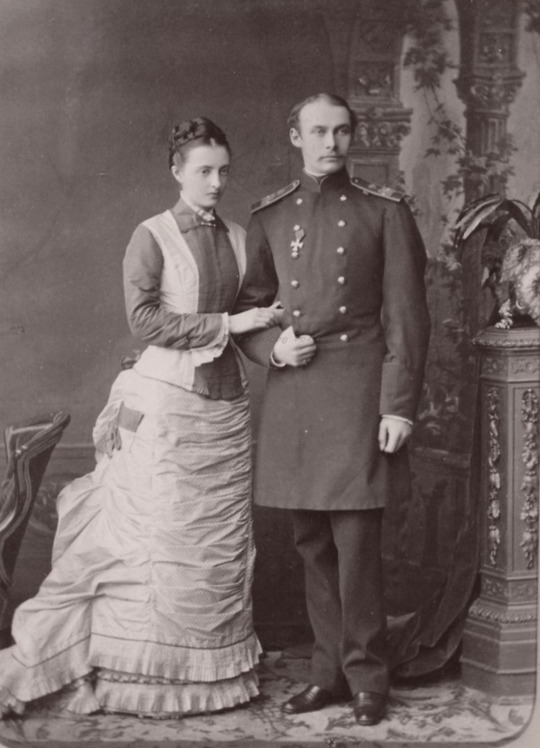

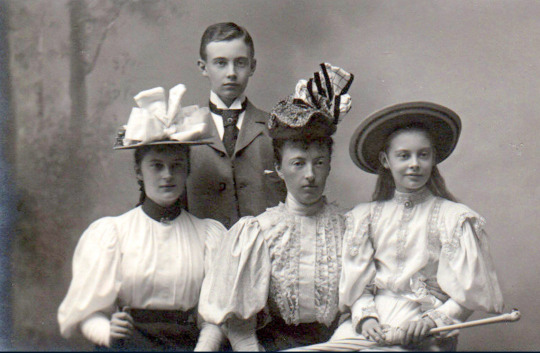



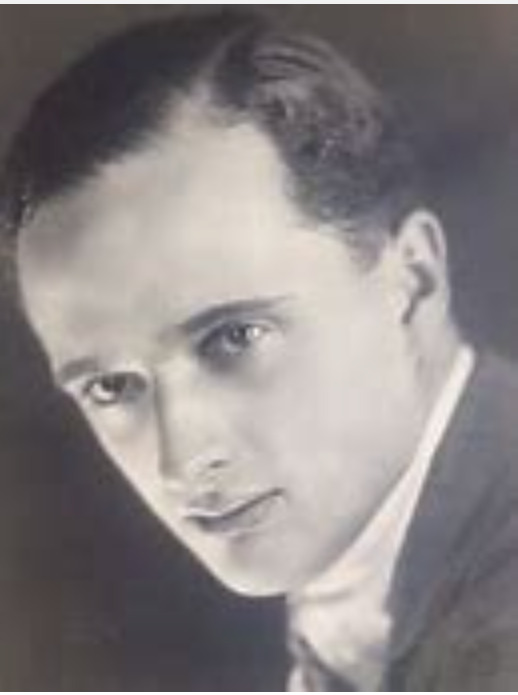


Photographs: 1. Grand Duke Mikhail Nicholayevich and his wife, Grand Duchess Olga Fyodorovna, with their two eldest children, Grand Duke Nicholas Mikhailovich and Grand Duchess Anastasia Mikhailovna; 2 and 3: Anastasia as a young girl; 4 and 5: Anastasia as a young woman. In one of the photos, she is wearing Russian court dress; 6. Anastasia with her brother Grand Duke Mikhail Mikhailovich (Miche-Miche); 7. Anastasia with her brother Grand Duke Georgiy Mikhailovich; 8. Anastasia with her brother Grand Duke Sergei Mikhailovichl 9. Anastasia with her youngest brother, who died at twenty, Grand Duke Alexis Mikhailovich; 10. Anastasia with her brother Grand Duke Alexander "Sandro" Mikhailovich; 11. Anastasia with her niece Princess Irina Alexandrovna; 12 and 13; Two photos of Anastasia with her fiancee/husband Grand Duke Frederick Francis III of Mecklenburg-Schwerin; 14. Anastasia with her three children; 15 and 16: Two pictures of Anastasia; 17: Anastasia's three children and their spouses: From left to right: Her daughter Alexandrine of Mecklenburg-Schwerin with the future King Christian X of Denmark, Her son, Frederick Francis IV with Alexandra of Hanover and Cumberland, and her daughter Cecilie of Mecklenburg-Schwerin with Crown Prince Wilhelm; 18. Her illegitimate son Alexis Louis de Wenden; 19: Villa Wenden in Nice; 20. The formidable Grand Duchess Anastasia Mikhailovna.
The other Anastaisa
Grand Duchess Anastasia Mikhailovna was born in 1860, the second child and only daughter of Grand Duke Mikhail Nicholaevich and Grand Duchess Olga Feodorovna (nee Princess Cecilie of Baden.) Anastasia was a granddaughter of Nicholas I. The better-known Anastasia (the daughter of Nicholas II) would be born a little over a half-century later, promising to be just as indomitable as her predecessor (she did not have the chance to fulfill that promise.)
Stasi (as her brothers called Anastasia Mikhailovna) was her father's favorite child. Her brothers worshipped her. Her mother was the disciplinarian of the house. The boys were allowed to see their sister only on Sundays.
Anastasia married Frederick Francis III, Grand Duke of Mecklenburg-Schwerin, at 19. Frederick Francis was Grand Duchess Maria Pavlovna, the Elder's brother. He had very poor health throughout his life; he had asthma and multiple allergies and rashes, and he needed to live during extended periods in the warmer climate of the Mediterranean rather than in Northern Europe; this was just fine with Anastasia, who would never adjust to her adoptive country or gain the affection of the people there. The couple established Villa Wenden in the South of France, and she would live in that area of the world most of her life. Frederick's homosexuality was known throughout Europe, but the couple seemed to have gotten along well. Anastasia spent lavishly at the casinos, and Frederick Francis was glad to provide her with the funds. When the Grand Duke died, she said: "On this day, I have lost my best friend."
They had three children, and all married very well:
Duchess Alexandrine of Mecklenburg-Schwerin (1879 –1952); married King Christian X of Denmark. They had two sons.
Frederick Francis IV, Grand Duke of Mecklenburg-Schwerin (1882 –1945), married Princess Alexandra of Hanover and Cumberland. They had five children.
Duchess Cecilie of Mecklenburg-Schwerin (1886 –1954.) She married Wilhelm, the German Crown Prince. They had six children.
Up to the death of her husband, Anastasia's life had transcurred without scandal. However, a few years later, she began an affair with Vladimir Alexandrovitch Paltov, her secretary. She soon became pregnant by him and attempted to hide that fact by claiming she was suffering from a tumor. She claimed to have chickenpox when she delivered the child. Her son, Alexis Louis de Wenden, was born in Nice in 1902. She was able to bring him up herself and wrote to him daily when he was away at school. After the scandal became public, she was advised never to live near her daughter, now the Crown Princess of Germany (she was given special permission to visit her daughter for the birth of her first grandson.)
After her father had a stroke, he went to live with Stasi in Villa Wenden. As the senior member of the Romanov clan, "Uncle Misha" received many visitors, including the Tsar. At least one of her brothers was in residence at Villa Wenden at any given time. When her father died in 1909, Anastasia inherited an enormous fortune. She continued to live as she wished, gambling heavily, going to the theater, and dancing.
World War I split the family apart. Her son was the reigning Grand Duke of Mecklenburg-Schwerin, her daughter was the German Emperor's daughter-in-law, she was a Russian Grand Duchess, and her Russian family was fighting on the opposite side. She settled in neutral Switzerland. The war cost her son and daughter their (prospective) crowns. After the war, she returned to Nice. There she founded a charity to help Russian exiles. Vladimir Paltov was the charity's president, perhaps indicating that the relationship continued. She lived in Villa Fantasia in Eze, which is near Cannes.
Anastasia died suddenly after suffering a stroke in 1922. She rests in Ludwigslust next to her husband. All of her children have living descendants today, including her illegitimate son. She certainly lived as she wished. Which is something that the other Anastasia would have probably done should she have been given the chance.
#russian history#imperial russia#romanov family#Grand Duchess Anastasia Mikhailovna#villa Wenden#Grand Duke Mikhail Nikolayevich#Grand Duke Georgie Mikhailovich#Grand Duke Mikhail Mikhailovich#Grand Duke Alexander Mikhailovich#Grand Duke Nicholas Mikhailovich#Grand Duke Alexis Mikhailovich#Grand Duchess Olga Fyodorovna#Frederick Francis III Grand Duke of Mecklenburg Schwerin#Frederick Francis IV Grand Duke of Mecklenburg Schwerin#Duchess Cecilie of Mecklenburg Schwerin#Christian X of Denmark#Crown Prince Wilhelm of Germany#Alexis Louis de Wenden
20 notes
·
View notes
Text
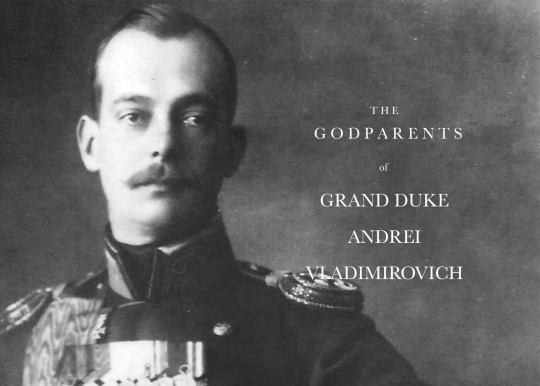
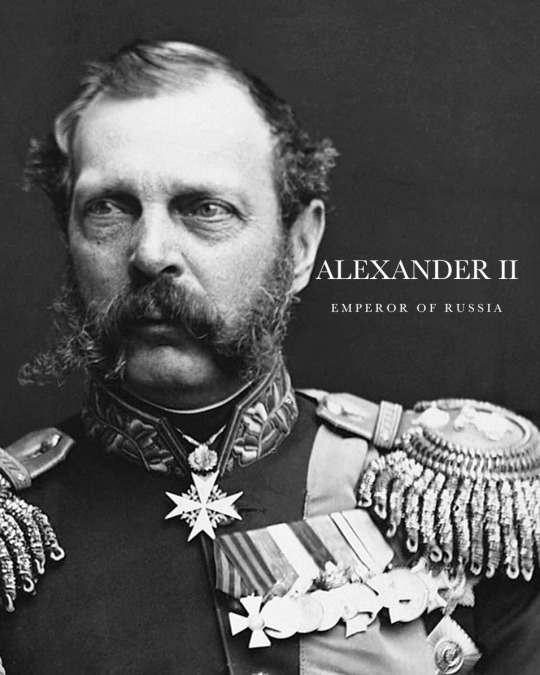
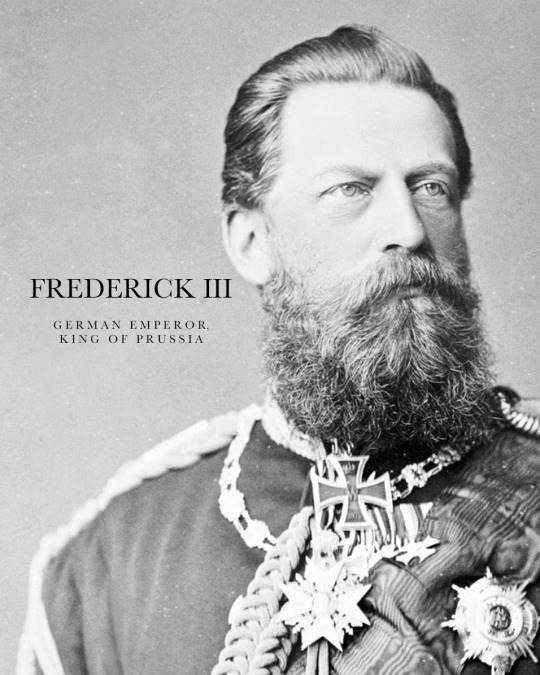

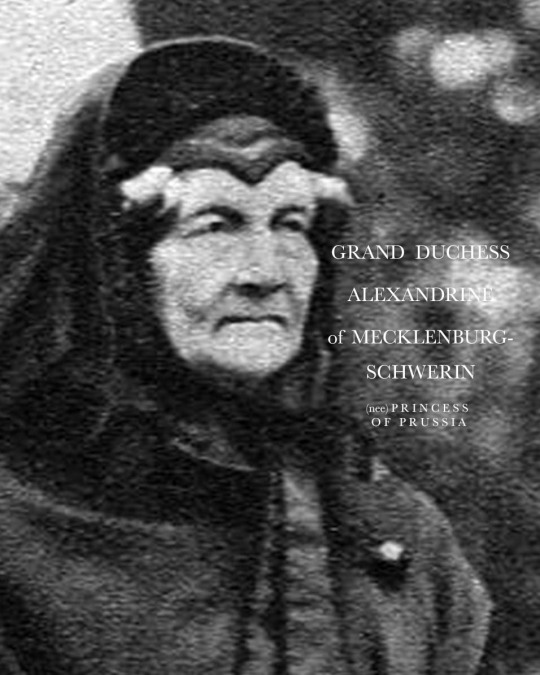
GODPARENTS OF GRAND DUKE ANDREI VLADIMIROVICH
Grand Duke Andrei Vladimirovich was born on 14 May 1879 at his parents country residence, the Vladimir Villa in Tsarskoe Selo, Saint Petersburg. He was the third surviving son of Grand Duke Vladimir Alexandrovich of Russia and his German-born wife Grand Duchess Maria Pavlova (the Elder/née Duchess of Mecklenburg-Schwerin). He was christened on 24 June at the Winter Palace by the Confessor of Their Imperial Majesties. His godparents were:
ALEXANDER II, EMPEROR OF RUSSIA - the Russian Emperor, his paternal grandfather, was one of his godparents. Alexander’s most significant reform as emperor was the emancipation of Russia’s serfs in 1861, for which he is known as Alexander the Liberator. Grand Duke Andrei was only a year-old when his grandfather was assassinated.
FREDERICK III, GERMAN EMPEROR AND KING OF PRUSSIA - then the Crown Prince, he was named as one of the godparents of the young grand duke. A first cousin of Andrei's grandfather, he became German Emperor and King of Prussia in 1888 for only 99 days.
GRAND DUCHESS ALEXANDRA PETROVNA OF RUSSIA - his great-aunt by marriage was another of Andrei's godparents. Also a Romanov by descent, she married the unpopular Grand Duke Nicholas Nikolaevich in 1856. Their marriage was an unhappy one, albeit sharing two sons. Known for her charity work, she later became a nun under the name Sister Anastasia.
ALEXANDRINE, GRAND DUCHESS OF MECKLENBURG-SCHWERIN - his maternal great-grandmother, a Prussian-born princess was another of his godparents. She was a sister of Empress Alexandra Feodorovna-consort of Nicholas I-who was also Andrei's great-grandmother on his father's side. In 1822, she married Paul Frederick, Hereditary Grand Duke of Mecklenburg-Schwerin (himself, a grandson of Tsar Paul). Their marriage was generally considered unhappy, he was a military man who had little time for or interest in his wife and family. Alexandrine, by contrast, was a devoted mother who tenderly raised her children and actively cultivated their cultural pursuits.
Source
5 notes
·
View notes
Text

Currently there is no known photos of the wedding of Tsar Nicholas II of Russia and Princess Alix of Hesse and By Rhine on 14 November 1894 ( 26 November 1894 N.S.) at the Grand Church of the Winter Palace.Of course they may still be in the Russian Archives,not yet released
On 19 April 1894, Tsarevich Nikolai Alexandrovich Romanov of Russia was at the wedding of Ernst-Ludwig Grand Duke of Hesse, to their mutual cousin,Princess Victoria Melita of Saxe-Coburg and Gotha. Nicholas had also obtained permission from his parents, Tsar Alexander III and Empress Marie Feodorovna, to propose to Ernst's younger sister, Princess Alix of Hesse and by Rhine.The Emperor and Empress had initially been opposed to the match. However, Nicholas, who had first met Alix a decade earlier in St. Petersburg when Alix's sister, Princess Elisabeth of Hesse and by Rhine, married Nicholas's uncle, Grand Duke Sergei Alexandrovich Romanov of was not to be dissuaded. Furthermore, Tsar Alexander's health was beginning to fail.
Shortly after arriving in Coburg, Nicholas proposed to Alix. However, Alix, who was a devout Lutheran, rejected Nicholas's proposal, as in order to marry the heir to the throne, she would have to convert to Russian Orthodoxy.However, Alix's cousin, Kaiser Wilhelm II of Germany, who had been at the wedding, insisted that it was her duty to marry Nicholas, despite her religious scruples.Elisabeth also spoke with her, insisting that there were not that many differences between Lutheranism and Orthodoxy. At the prompting of the Kaiser, Nicholas proposed for the second time, and she accepted.
On 1 November 1894, Alexander III died at Maly Palace, Livadia, leaving twenty-six-year-old Nicholas as the next Tsar of Russia. The following day, Alix, who had arrived at Livadia several days earlier in order to receive the dying Tsar's blessing, was received into the Russian Orthodox Church as Grand Duchess Alexandra Feodorovna.Alix had apparently expressed her wish to take the name Catherine, but decided to take the name Alexandra on Nicholas's request.
Guests
The groom's family
•The Dowager Empress Marie Feodorovna of Russia ~ mother of Nicholas II
•Grand Duchess Xenia Alexandrovna Romanova of Russia ~ sister of Nicholas ll
•Grand Duke Alexander Mikhailovich Romanov of Russia ~ brother-in-law and first cousin once removed) of Nicholas II
•Grand Duke Mikhail Alexandrovich Romanov of Russia, brother of Nicholas II
•Grand Duchess Olga Alexandrovna Romanova of Russia, sister of Nicholas II
•Grand Duke Vladimir Alexandrovich Romanov of Russia ~ paternal uncle of Nicholas II
Grand Duchess Marie Pavlovna Romanova of Russia (the Elder) ~ paternal aunt by marriage of Nicholas II
•Grand Duke Kyril Vladimirovich Romanov of Russia ~ paternal first cousin of Nicholas II
•Grand Duke Boris Vladimirovich Romanov of Russia ~ paternal first cousin of Nicholas II
•Grand Duke Andrei Vladimirovich Romanov of Russia ~ paternal first cousin of Nicholas II
•Grand Duchess Elena Vladimirovna Romanova of Russia ~ paternal first cousin of Nicholas II
•Grand Duke Alexei Alexandrovich Romanov of Russia ~ paternal uncle of Nicholas II
•Grand Duke Sergei Alexandrovich Romanov of Russia ~ paternal uncle of N0icholas II
Grand Duchess Elisabeth Feodorovna Romanova of Russia ~ sisters-in-law and paternal aunt by marriage of Nicholas II
•Grand Duke Pavel Alexandrovich Romanov of Russia ~ paternal uncle of Nicholas II
•Grand Duchess Alexandra Iosifovna Romanova of Russia ~ paternal grandaunt by marriage of Nicholas II
•Grand Duke Konstantin Konstantinovich Romanov of Russia ~ first cousin,once removed of Nicholas II
•Grand Duchess Elizaveta Mavrikievna Romanova of Russia ~ first cousin once removed by marriage of Nicholas II
•Grand Duke Dmitri Konstantinovich Romanov of Russia ~ first cousin once removed of Nicholas II
•Duchess Vera of Württemberg, first cousin once removed of Nicholas II (representing the King of Württemberg)
•Grand Duke Mikhail Nikolaevich Romanov of Russia ~ paternal granduncle of Nicholas II
•Grand Duke Nikolai Mikhailovich Romanov of Russia ~ first cousin once removed of Nicholas II
•Grand Duke Georgiy Mikhailovich Romanov of Russia ~ first cousin once removed of Nicholas II
•Grand Duke Sergei Mikhailovich Romanov of Russia ~ first cousin once removed of Nicholas II
•King Christian lX of Denmark ~ maternal grandfather of Nicholas II
•King George l of the Hellenes ~ maternal uncle of Nicholas ll
•Queen Olga of the Hellenes ~ maternal aunt and first cousin once removed of Nicholas II
•Prince George of Greece and Denmark ~ first cousin of Nicholas II
•Prince Valdemar of Denmark ~ maternal uncle of Nicholas II
The bride's family
•Grand Duke Ernst-Ludwig of Hesse and by Rhine ~ brother of Alexandra Feodorovna
•Princess Irene of Prussia ~ Sister of Alexandra Feodorovna
•Prince Henry of Prussia ~ brother-in-law and maternal first cousin of Alexandra Feodorovna (representing the German Emperor)
•Edward, Prince of Wales ~ uncle of both Alexandra and Nicholas (representing the Queen of the United Kingdom)
•Alexandra,Princess of Wales ~ aunt of both Alexandra and Nicholas (representing the Queen of the United Kingdom)
•The Prince George,Duke of York ~ Alexandra and Nicholas' mutual first cousin
•Alfred,Duke and Duchess of Saxe-Coburg-Gotha ~ uncle of Alexandra Feodorovna and uncle by marriage of Nicholas ll
•Grand Duchess Maria Alexandrovna Romanova,Duchess of Saxe-Coburg-Gotha ~ aunt of Nicholas ll and aunt by marriage of Alexandra Feodorovna
•Ferdinand, Crown Prince of Romania, husband of Alexandra and Nicholas' mutual first cousin (representing the King of Romania)
Foreign Royalty
•Mecklenburg : Duke John Albert of Mecklenburg ~ second cousin once removed of Nicholas II (representing the Grand Duke of Mecklenburg-Schwerin)
•Grand Duchy of Baden : Prince Wilhelm and Princess Maria Maximilianovna of Baden, second cousin once removed of both Nicholas and Alexandra, and first cousin once removed of Nicholas II (representing the Grand Duke of Baden)
•The Duke of Leuchtenberg, first cousin once removed of Nicholas II
Prince George Maximilianovich and Princess Anastasia of Leuchtenberg, first cousin once removed of Nicholas II and his wife
•Grand Duchy of Oldenburg : Duke Alexander Petrovich and Duchess Eugenia Maximilianovna of Oldenburg, second cousin once removed and first cousin once removed of Nicholas II (cousin of the Grand Duke of Oldenburg)
•Grand Duchy of Oldenburg : Duke Peter Alexandrovich of Oldenburg ~ second cousin of Nicholas II
•Grand Duchy of Oldenburg : Duke Constantine Petrovich of Oldenburg ~ second cousin once removed of Nicholas II
•Grand Duchy of Mecklenburg-Strelitz : Duke Georg Alexander of Mecklenburg-Strelitz ~ second cousin once removed of Nicholas II (nephew of the Grand Duke of Mecklenburg-Strelitz)
•Grand Duchy of Mecklenburg-Strelitz : Duke Karl Michael of Mecklenburg-Strelitz ~ second cousin once removed of Nicholas II
•Duchy of Saxe-Altenburg Prince Albert and Princess Helene of Saxe-Altenburg ~ third cousin once removed of both Nicholas and Alexandra, and second cousin once removed of Nicholas II (representing the Duke of Saxe-Altenburg)
63 notes
·
View notes
Text

Grand Duchess Elena Pavlovna of Russia
A portrait by Vladimir Borovikovsky, 1796, rococo
Grand Duchess Elena Pavlovna of Russia, Hereditary Princess of Mecklenburg (24.12.1784 - 24.09.1803) was the daughter of the future Tsar Paul I of Russia and Sophia Dorothea of Württemberg. She had been named after Helen of Troy and mainly educated in feminine subjects, such as music, art and literature.
She was closest to her sister Alexandra, who almost had the same life planned for her as Elena had had. She had an arranged marriage to the Hereditary Prince Friedrich Ludwig of Mecklenburg-Schwerin. They married in Russia in 1799 when she was just fifteen years of age.
Elena went on to give birth to two children; a boy, Paul Friedrich, Grand Duke of Mecklenburg-Schwerin and a daughter, Marie Louise of Mecklenburg-Schwerin. It has been said that her marriage was a happy one.
A month after falling gravely ill, she died in Ludwigslust, Mecklenburg-Schwerin at the age of 18.
#grand duchess elena pavlovna#romanov#romanov dynasty#18th century#19th century#rococo#vladimir borovikovsky#women in history#women in art#portrait#rococo portrait#women in portraits#dark acadamia aesthetic#dark academia#art history
9 notes
·
View notes